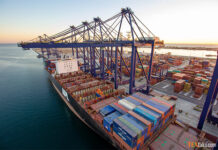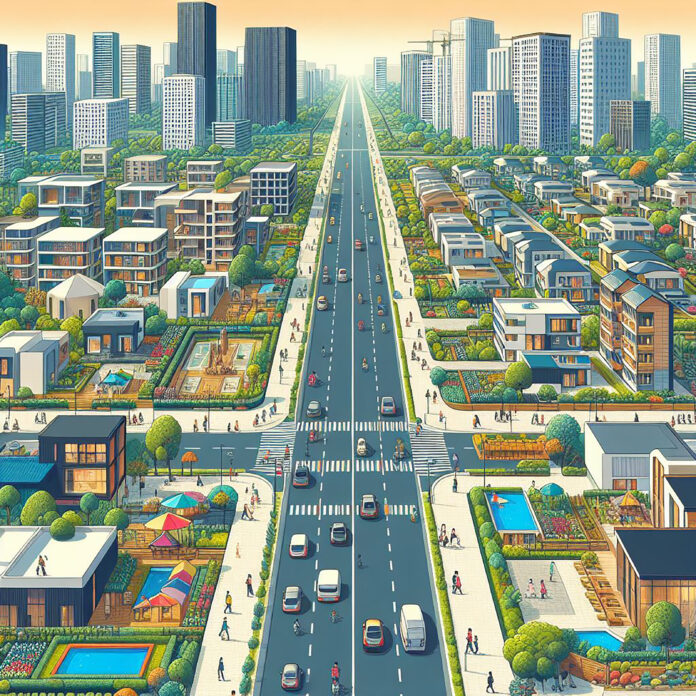The heat is punishing in the Punjab. As the heatwave takes over Pakistan’s Grand Trunk districts, it is worth reflecting on how we have found ourselves in this situation. One of the factors that can shed some light on the current punishing highs of the mercury scale can be found in the rapid urbanization of Punjab and its effects.
This is not a problem unique to Pakistan. The transformation of urban areas into sprawling mega-regions is a global phenomenon, and nowhere is this more evident than in the extensive urban sprawl that stretches over hundreds of kilometers, potentially becoming one of the world’s most densely populated areas. With the urban population surge, traditional city limits have dissolved, giving way to a continuous urban expanse, “The GT Road Megalopolis”. This urban transformation has erased the once-fertile farmland that gave rise to the Grand Trunk Road. It is as if we’ve exchanged green fields for a concrete Megalopolis in our relentless pursuit of progress.
This journey through the GT Road Megalopolis reveals a broader narrative. Mega-regions, such as this one, exist throughout the world, such as the West Africa mega region and the North-Eastern corridor in the USA.
Cities in Punjab no longer adhere to rigid borders but blend, intermingle, and expand beyond their urban boundaries. Lahore, Kasur, Sheikhupura, Muridke, Kamoke, Gujranwala, Ghakhar, Jhelum, and Gujrat have transformed into one big Megaregion. The cities once distinct from their rural surroundings have morphed into a contiguous web of urban development. This phenomenon of interconnected cities is known as a “Megalopolis.”

Satellite night-time imagery portrays this phenomenon. City lights no longer adhere to their prescribed territories; they form an interconnected, luminous web that defies conventional boundaries. The combined population of these regions, according to census data, is approximately close to 42 million. This expansive urban sprawl stretches over 250 kilometers, becoming one of the world’s most significant Megalopolises.
The 2023 census data indicates that Punjab’s urban population has surged to 40%, providing a mere glimpse into the extensive transformation unfolding. This massive urbanization trend is not captured by the Census. The definition of urban population used in the Census fails to capture the true picture of the situation.

In several countries, such as India and Ghana, areas with 5,000 or more people are classified as urban. However, according to the Census data, these areas are categorized as rural. If we reconsider these 5,000+ agglomerations as urban, the distribution between rural and urban populations is reversed. Our calculations indicate that if we classify these 5,000+ agglomerations as urban, Punjab’s urban population would be approximately 69%.
If we go a step further and take into account all the 2000+ agglomerations because they are also demonstrating urban characteristics, this figure goes up to 89%. In any case, these agglomerations are also urbanizing and at the very least we are fast headed towards around 90% urbanization in Punjab.
This rapid urbanization and increase in urban population show the true scale of the challenge at hand. The GT Road Megalopolis has the worst air quality in the world. Unchecked urbanization and a growing population are major drivers behind this worsening air quality.
Air quality concerns
As you travel across the GT Road Megalopolis, it’s evident that it’s not just farmland that has vanished. Entire villages have transitioned into modern housing societies. What used to be an intercity drive now resembles a tour of cookie-cutter property listings.
This transformation isn’t merely an economic puzzle; it’s a lifestyle choice. The quest for land ownership is deeply ingrained in our culture, with many considering it the ultimate achievement. People are willing to overcome financial obstacles to secure their own piece of land. In the absence of people centric or sustainable urban planning, the real estate bonanza has spiral out of control.
It does not signify progress, in fact, this comes at a great cost. The GT Road Megalopolis has the worst air quality in the entire region, as visible in the image below, showing that the AQI levels in the region are hazardous, making it essentially unliveable. Increasing vehicular traffic, industrial emissions, and construction activity have led to elevated air pollution levels that pose serious health risks to residents.

The impacts of climate change, such as rising temperatures, extreme weather events, and shifting weather patterns, have consequences for the agricultural heartland of Pakistan, once flanked by the GT Road. Altered rainfall patterns and more frequent heat waves now pose challenges to this Megalopolis.
Urban Heat Island
As temperatures rise, there are other factors making our cities hotter.
“Urban Heat Islands” are areas within cities where the temperature is significantly higher than in surrounding rural areas. This phenomenon occurs because cities replace natural land cover, such as forests and grasslands, with dense concentrations of pavement, buildings, and other surfaces that absorb and retain heat. These materials, like asphalt and concrete, store heat during the day and slowly release it at night, leading to higher temperatures overall. As a result, urban heat islands contribute to increased energy costs, primarily due to the higher demand for air conditioning to cool indoor spaces. Additionally, they exacerbate air pollution levels as the heat accelerates the formation of smog. Furthermore, the elevated temperatures can lead to a rise in heat-related illnesses and mortality, particularly affecting vulnerable populations such as the elderly and those with preexisting health conditions.
This is particularly relevant to the Punjab. As we can see in the diagram below.

Balancing progress, responsibility, and local governance
The burgeoning urban sprawl along the GT Road also presents an economic promise, but it carries the weight of environmental consequences in terms of air pollution and contributions to climate change. This calls for immediate attention and action, emphasizing sustainable urban planning, green infrastructure, and enhanced pollution control measures as necessities rather than luxuries.
In an era where urbanization signifies progress, let the GT Road Megalopolis be an example of how economic development can coexist with environmental stewardship. As the concrete Megalopolis thrives, let it do so without suffocating itself in its success.
The solution to these challenges lies in strong, effective local governments. Without them, this mega-region is poised to become more polluted and unliveable. The challenge now is to address these environmental concerns while maintaining the momentum of progress. Sustainability must be integrated into the urbanization plan. Public transportation needs to be prioritized on a mass scale. Stricter regulations on emissions and pollution control are necessary steps to safeguard the health and well-being of the residents.
Moreover, this environmental awakening presents economic opportunities of its own. The development of clean energy industries, the promotion of eco-friendly transportation options, and investment in sustainable urban infrastructure can foster economic growth while reducing the environmental impact.
Cities worldwide are facing similar challenges. The GT Road Megalopolis can learn from successful models of sustainable urban development in cities like [peer countries e.g. China, Indian cities]. These cities have effectively balanced economic growth with environmental responsibility, making them more livable and environmentally friendly through ambitious public transportation programs, mixed-use urban development programs, and moving away from car-based urban development.
In conclusion, the GT Road Megalopolis is a growing concrete Megalopolis. It is important to recognize the environmental consequences and address them proactively. The future of this urban landscape lies in sustainable urban planning, responsible resource management, and a commitment to clean and green living. Pakistan’s concrete Megalopolis can be a shining example of a Megalopolis that thrives while preserving its natural heritage. The choice is ours to make, and it’s a choice that will resonate not only within the GT Road Megalopolis but also across the globe as we confront the challenges of urbanization and environmental sustainability.
























